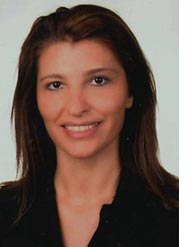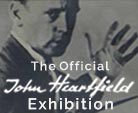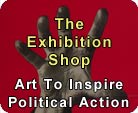Turkish Political Art World Discovers German Antifascist Artist John Heartfield
<< HIDDEN GENIUS / ART SCHOLARS
Turkish Political Art Critic Meral Bostanci Introduces Heartfield In Turkey
Read her wonderful description of how she came to know of John Heartfield’s life and work (Below Right).
Read her article on John Heartfield in e-Skop (e-Skop text is in Turkish. CLICK HERE for the English translation of Ms. Bostanci’s article).
Read her article on John Heartfield in WARHOLA Magazine 06 (Text is in Turkish and English).
A PDF of Ms. Bostanci’s entire thesis (In Turkish), John Heartfield and Object Interpretation, is available for download below.

She has published essays and articles (available below) on art criticism and visual semiology analysis, particularly in disciplines such as painting, sculpture, cinema and literature.
Ms. Bostanci was born in Istanbul in 1971. She is a graduate of the Anadolu University Faculty of Management. She worked as finance manager in several countries from 1993-2008.
From 2001-2008, she participated in exhibitions while studying ceramics in the Yortan Art Workshop under the supervision of Dr. Serif Gunyar. From 2008-2009, she was in charge of organizing exhibitions for the Foundation of Artists and Art Connoisseurs. She has been a member of the International Culture and Arts Academy of Knidos since 2010.
Since completing her thesis on John Heartfield, Ms. Bostanci continues to research the artist’s life and work. Her goal is to introduce Heartfield’s artistic ideology to the Turkish public.
DOWNLOAD MERAL BOSTANCI’S THESIS
John Heartfield and Object Interpretation
(Available Only In Turkish)
John Heartfield and Object Interpretation
(Abstract)
By Meral Bostanci
The photomontage techniques of John Heartfield forms the centre of researches made hitherto about the effects of Berlin Dada movement on twentieth century avant-garde art tendencies. Berlin Dada in the political history, used photomontage as a more satirical form than Zurich Dada and with these techniques formed the basis of activist opposition towards “Weimar Republic”. Thus many art theorists and political scientists describe John Heartfield, a member of German Communist Party (KPD) and a left wing representative of this movement in Berlin, as a prominent artist with his artistic activities towards political goals.
The last part of this research is directed towards commenting on John Heartfield’s works. And this requires some comments and ideas which have the characteristics of a process studying from aesthetic tools to political goals. In other words this section contains researches on how John Heartfield used photomontage technique, which is a form of art, with aesthetic tools to express his ideological thoughts to large masses of people. The last section which is bound up with these courses where printed media and visual communication products are used, contains quantitative method researches with analysis directed towards categorization of his works bearing tragic and enthusiastic traces of John Heartfield’s real life.
— And Why More People Around The Globe
Should Know More About Him —
By Meral Bostanci
My interest in John Heartfield began when I attended Western Art classes during my graduate studies.
At the end of the term, students had to give a presentation about an artist from a list provided by our professor. Naturally, students chose an artist they already knew. I didn’t rush. When everyone was done, I checked the list. There were three names left. One of them was John Heartfield. I’d never heard of him and I decided to choose him.
My professor said I could choose one of the others.
I said, “No, there’s no need. This way I‘ll have the chance to know John Heartfield’s work.”
I gathered all the information I could and prepared my presentation about Heartfield. Unfortunately, the resources were not as rich as the known artists. There were almost no resources in Turkish about John Heartfield. There were a few lines mentioning his name, but that’s it.
Considering these circumstances, lots of translation was necessary. After I did the translations, I began to understand how John Heartfield reflected his ideological attitude through his art. His opposing attitude seemed very different from the artists who claim to be doing political art today. He never gave up. He put his heart into his work at the real risk of his own life. He challenged the authorities with all his strength to motivate people for truth, morality, and ethics. Behind his grotesque and sometimes wild satirical caricatures, he had a virtuous purpose. I admired his perspective and interpretation of social events. The position he takes against war and the way he is recusant, always questioning authority.
His work stirred my emotions. When the time came to give my presentation, I didn’t even have to look at the papers in front of me. Words just came out. My professor congratulated me. My friends also complimented me.
It was the end of the term. We needed to select the subject of our thesis. Considering the lack of the resources in Turkey, I told my professor that I would like to write a thesis about John Heartfield’s life, work, and his view of art. My professor supported me and she became my thesis supervisor. In this regard I owe a debt of gratitude to my Professor, Dr. Nilufer Ondin, who is the co-head of the Department of Art History of Mimar Sinan Fine Arts University.

